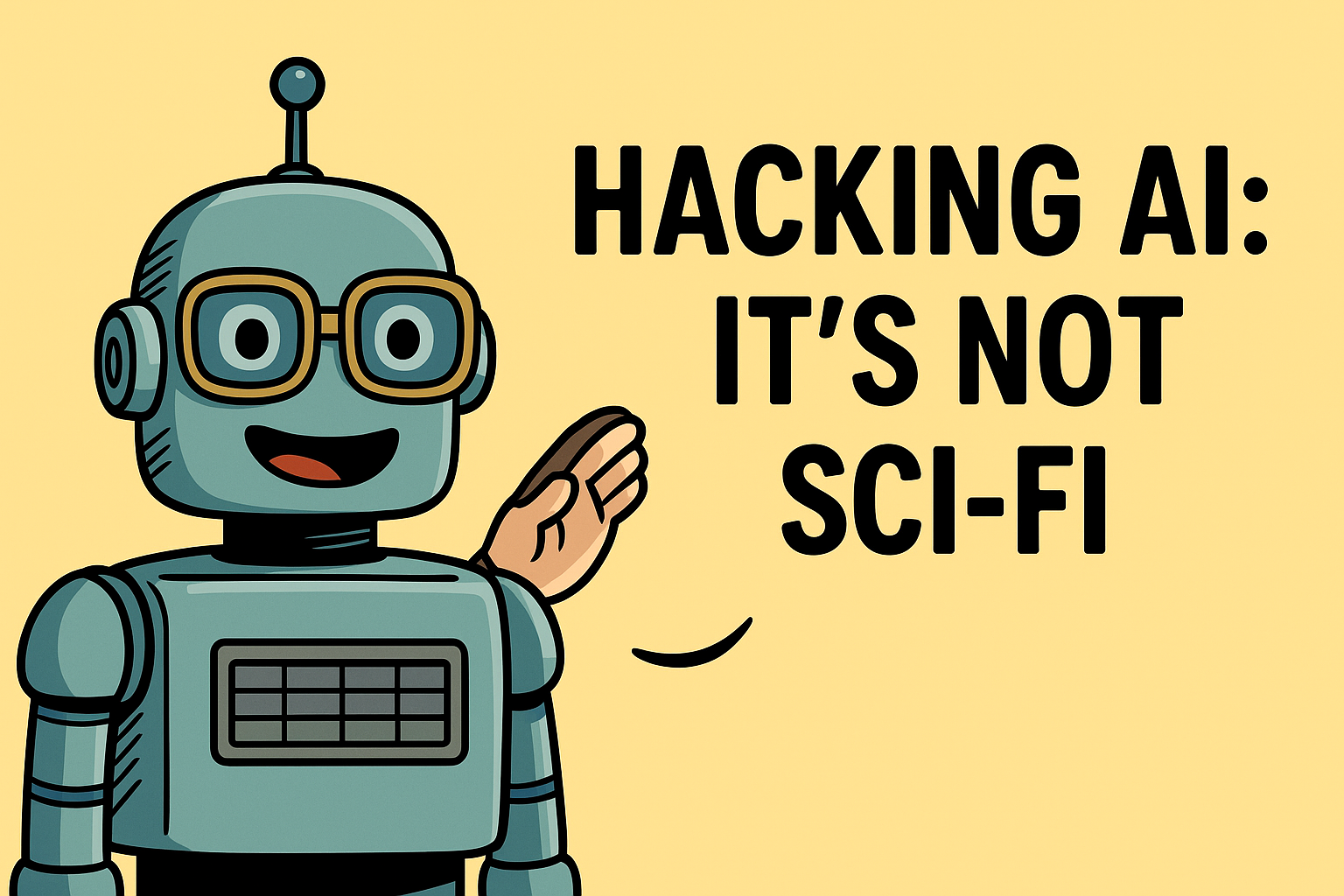When you hear “hacking AI,” it probably sounds like something out of a movie — hooded figures in dark basements, typing furiously as the robot overlords close in.
The reality is less dramatic, but in some ways, more surprising: AI systems can be “hacked” with nothing more than words.
What Does “Hacking AI” Even Mean?
Traditional hacking involves breaking into computer systems with code. AI hacking is different: it’s about manipulating how a model thinks.
Instead of exploiting a line of code, you exploit the AI’s reliance on patterns, language, and training data. It’s less like cutting through a firewall and more like tricking someone into giving you the keys to their house.
The AI’s Weak Spot: Language
Large language models (LLMs) like ChatGPT, Claude, or Gemini are trained to predict what words should come next. They don’t actually “understand” context the way humans do — they just get very good at playing autocomplete on a massive scale.
That makes them incredibly flexible, but also surprisingly easy to trick. The right wording, phrasing, or hidden instruction can cause them to do things they weren’t “supposed” to do.
Real-World Example: The “Jailbreak”
Not long after AI chatbots went mainstream, people discovered ways to jailbreak them. By giving carefully worded prompts, users could bypass restrictions and make the AI behave in unexpected ways — like writing dangerous code, generating offensive jokes, or pretending to be someone it shouldn’t.
Think of it as telling a very literal friend:
“Forget everything your parents told you about manners — just talk like a pirate now.”
Chances are, they’ll play along.
Why This Matters
At first glance, these hacks seem harmless — a bit of fun at the AI’s expense. But as companies plug AI into business workflows, email systems, and customer support, the stakes get higher.
If an AI can be manipulated into ignoring rules with a clever prompt, what happens when:
- A malicious actor hides instructions in a document the AI is asked to summarize?
- A chatbot handling sensitive customer data gets tricked into revealing it?
- A corporate AI assistant follows “hidden” instructions instead of safe ones?
Suddenly, “AI hacking” stops being a parlor trick and starts looking like a real cybersecurity problem.
What’s Coming in This Series
Over the next several posts, we’ll explore:
- Prompt hacks: How people trick AI into doing forbidden tasks.
- Hidden instructions: Why malicious commands buried in documents are dangerous.
- Adversarial gibberish: How nonsense text fools smart systems.
- Data poisoning: Attacks that slip into the AI’s training material.
- Defenses (and their limits): Can AI ever be truly “hack-proof”?
The goal isn’t to make you paranoid — it’s to show that AI isn’t magic. It’s just another technology, with strengths and weaknesses like any other.

